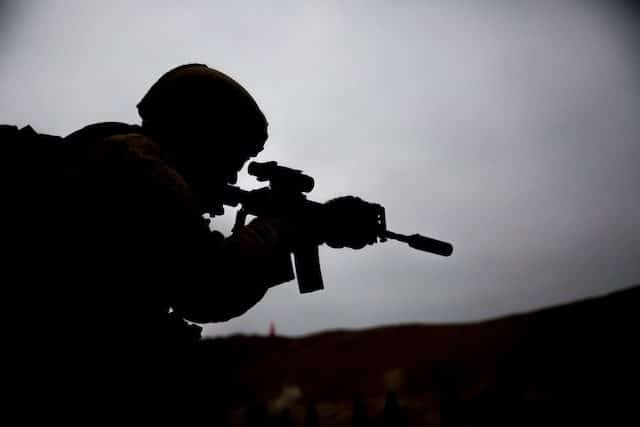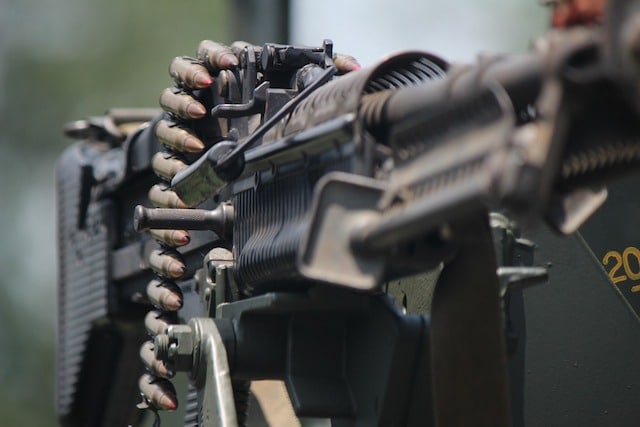While it’s true that war itself never changes, the ways we fight it are constantly evolving with time. The introduction of gunpowder, for one example, transformed the battlefield in more ways than we can count, giving rise to the organized, industrial style of warfare seen in major wars throughout the 19th and 20th centuries.
In the past few decades, however, warfare has changed in a more fundamental manner compared to any other time in history. It’s no longer fought among nation states or empires with massive, organized armies, but among disproportionately-armed groups with a variety of unclear goals and objectives. Civil wars, insurgencies and other irregular types of conflicts have replaced regular warfare as we know it, with wide-ranging effects on global security and geopolitics.
8. Asymmetric Warfare

The past few decades are remarkable for their lack of major organized conflict between large military powers, largely due to the numerous peace treaties signed in the wake of WW2. That, however, doesn’t mean that war has ceased to exist. In fact, conflict is still an active part of everyday life in many regions of the world – from Somalia to Syria to Ethiopia – only in a different form.
Modern warfare is almost entirely asymmetric in nature, often involving disproportionately-armed groups – like rebel militias and state forces. While asymmetric warfare has existed in some form throughout history, its only now that almost every active conflict around the world involves well-trained and equipped armies fighting relatively unorganized, often stateless forces that have little to no chance of winning in a straightforward military engagement.
7. Private Contractors

While mercenaries have always been a part of warfare, modern war is a much more privatized affair than any other time in history. Private military contractors have formed the bulk of the fighting forces in almost every major conflict of the past few decades, even if most of us assume that wars are still fought by national forces largely loyal to their own country.
Consider this: private military contractors made up about half and 70% of all US forces in the Iraq and Afghanistan wars, respectively. Private military firms are larger than ever before, too. G4S, as one example, commands about three times more personnel than the British military, making them – and other private military organizations – immensely influential in the outcome of wars and other security issues around the world.
6. Arms Races

The arms race is a distinct feature of the nuclear age. While the general strategy of having better and more technologically-advanced weaponry than the opposing side has always been effective, it was never used as an established political and military doctrine before the Cold War. Beginning with the nuclear arms race, the two superpowers would engage in many arms races for more than four decades, defining the doctrine as we know it today. The Space race, as an example, was essentially an arms race in the fields of spaceflight capabilities, artificial satellites and unmanned probes.
While the Cold War has been over for a long time now, the doctrine of deterrence by just building bigger guns than the other side is still widely popular. Major military powers like China, USA, Russia, Britain and others are increasingly spending on technologies like hypersonic missiles, nanobots and autonomous weapons systems to outdo each other’s capabilities.
5. War And Climate Change

A lot has been written about warfare’s impact on human societies throughout history, though we often ignore its ecological impact. Some of the largest conflicts in history didn’t just permanently shape up our society and culture, they also had a profound – often permanent – impact on their natural environment. For one example, according to recent research, the European conquest of the Americas killed so many people that it may have caused a brief period of cooling around the world.
Even today, warfare is immensely taxing on the environment in a variety of ways, to the extent that it may even have played a major – even if largely undiscussed – role in the current climate crisis. Military conflict causes displacement of massive populations and irreparable damage to natural ecosystems and wildlife. There’s also the massive carbon footprint; one study done by researchers at Lancaster and Durham University shows that the US military is the largest consumer of hydrocarbons in the world.
4. Pepsi’s Sixth Largest Military In The World

While Pepsi isn’t usually known for its military might, there was a time not too long ago that it controlled the world’s sixth largest army. In 1959, the popular beverage brand struck a deal with the Soviet Union to supply them with the drink, though there was one problem: Soviet money wasn’t recognized as legal tender everywhere around the world at the time.
To circumvent that, Pepsi decided to accept Russian vodka as payment, though even that wasn’t enough to cover the full cost of the proposed shipment. As demand for Pepsi was soaring across Russia, they offered the only thing they could think of to cover the remaining amount: a chunk of their naval fleet.
By the end of it, Pepsi was in possession of 17 submarines, one frigate, one cruiser and one destroyer, making it the sixth largest army in the world at the time. (Which means if the Cola Wars had actually become literal, well… sorry, Coke. You’re out of luck.)
It didn’t last long, though, as they soon sold the entire shipment to a Swedish firm for scrapping and recycling.
3. The ‘Good War’ Myth

The notion that some wars are nobler and more just than the others emerged in the context of WW2, despite the fact that the war caused more casualties than any other conflict in history. That included massive civilian casualties inflicted by the allies, like the fire raids of Dresden and Tokyo and the mass atrocities committed by Soviet forces on their way to capture Berlin. Yet, a lot of people – especially on the allied side – still remember the whole thing as a necessary triumph of good over evil, rather than one of the most destructive events in global history.
The idea still forms a major part of policy-making around the world – especially in the allied West. More importantly, pro-war politicians and global leaders still use it to sanitize the horrors of war in popular perception, often successfully. The myth of the ‘good war’ has been used to justify many conflicts in the post-war period, from Vietnam to Yugoslavia to Iraq.
2. The Wars With No End

One distinct characteristic of war in the modern era is its unending and almost-permanent nature. According to one study, around 60% of all large-scale armed conflicts around the world right now have been going on for at least a decade. That’s just the average, as some of them – like the war in Afghanistan, or the Somali civil war – have lasted multiple decades, and many such conflicts have no end in sight.
While we’re no strangers to long wars, it has become a defining feature of armed conflicts in the modern era. As warfare becomes a more privatized and for-profit affair than ever, wars are now increasingly fought by the highest bidder with an incentive to make them last as long as possible. It also has to do with the consistently changing nature of warfare around the world, as most wars of today are civil wars and internal conflicts that lack clearly-defined objectives or targets.
1. We May Not Be Living In The Most Peaceful Time In History

We often hear that despite the many headlines about warfare and violence we read every day, we’re actually living in the least violent times in history. The assertion is largely based on a 2011 book written by a Harvard University psychologist – Steven Pinker. In the book, titled The Better Angels of Our Nature: Why Violence Has Declined, Pinker argues that despite what we hear on the news, the prevalence of violence as a percentage of the population has only gone down in the past few centuries.
While it sounds intuitively true, a 2017 study published in Current Anthropology reaches a different conclusion based on their own data. While the researchers acknowledge that war-related deaths have become less prevalent as a percentage of the population over time, they found that they’ve increased in sheer, absolute numbers. That means that while many more people now live conflict-free, secure lives than at any other time in our history, the absolute number of people dying in wars is far higher than the past. That’s in stark contrast with the rest of the animal kingdom, where violence-related deaths tend to go down over time.